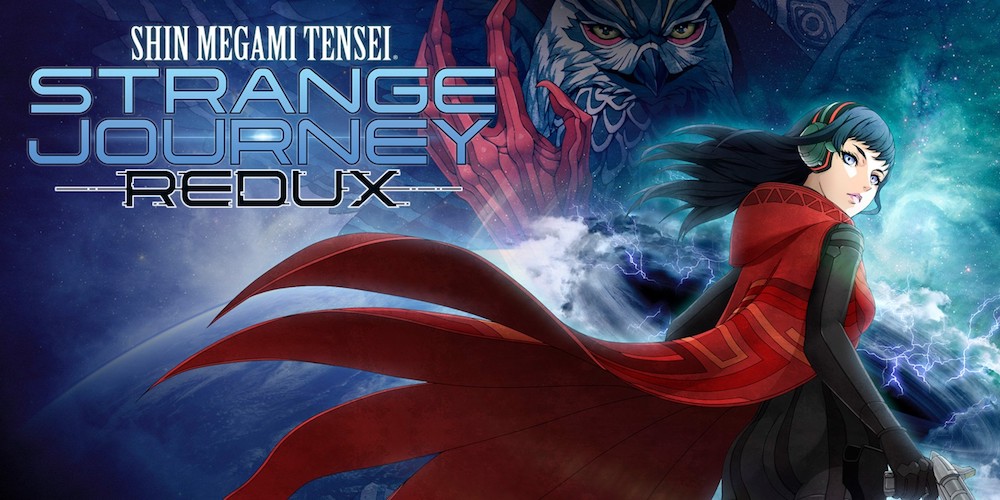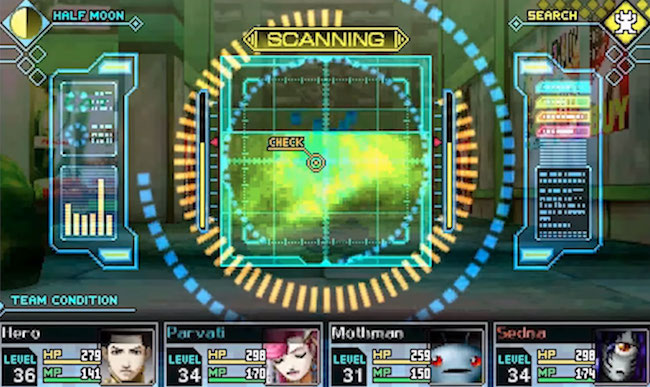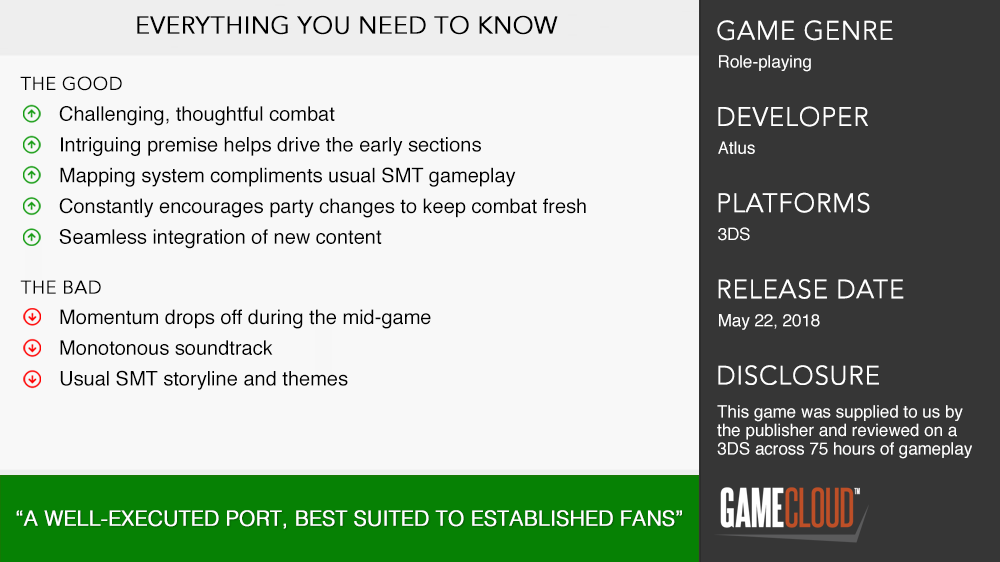
I’ll always jump at any opportunity to play a Shin Megami Tensei (SMT) game I haven’t yet tried yet for the challenging gameplay and unique storylines they consistently offer. The original DS release of SMT Strange Journey came out before I discovered the joys of this series, so I never experienced this unusual spin on the formula. Now that Atlus has brought it back as SMT Strange Journey Redux for the 3DS, I’ve been able to dive into the Schwarzwelt to plumb its mysteries for myself and bring me one step closer to my goal of experiencing every nook and cranny of the SMT line.
Amidst the crowded RPG scene, SMT games tend to distinguish themselves with a unique setting for their tale. While Strange Journey is set on modern-day Earth, it continues this tradition by sending you into the giant black void growing in the centre of Antarctica, labelled the Schwarzwelt. Covered-up by the media, early unmanned forays into the abyss have produced photographs of warped Earth-like structures. Nobody knows what it is, and, to cap it all off, it’s growing. The plot details your team’s journey into this anomalous zone, on a mission to gather any information from the inside.

This premise is fascinating from the get-go, helping drive players in the opening segments of the game. As the story goes about setting up the characters and circumstances, the early discoveries of your team continue to help keep players engaged over the course of this introductory sequence. It’s not often that I encounter a story with as fascinating an introduction as this, and it helps set the expectation for rest of the tale while keeping players immersed as they learn the mechanics of the game.
To those new to the SMT series, the overall system can be viewed as a high turn-over version of Pokémon, where all the cuddly creatures are replaced by majestic or (more often) horrific beings pulled from various cultures, all referred to collectively as “demons.” The “high turn-over” comes in with the way you handle your demons; where you would raise your Pikachu thirty levels over hours, here you’ll level your Ammut once before fusing it away into the much more useful Orochi. This creates an environment where your party composition has less to do with carefully crafted strategy and instead much more to do with a continually adjusting plan for how to make the most of your current most powerful or elementally-effective demons, which is a challenge even in random encounters, let alone boss battles.
These encounters come through in the standard turn-based RPG fare: choose your party’s attacks, everyone does their assigned action, and repeat. The twist to this particular SMT’s combat is called “Demon Co-op,” in which similarly aligned demons will all follow-up each other’s attacks if a weak-spot is struck. While a powerful tool, it’s not nearly as effective as the usual “Press Turn” system, also featured in Persona, where you’ve given an extra turn for hitting weaknesses. This less-powerful system results in more challenging combat, keeping every encounter interesting even in the late game as my power grew.

This brings us to perhaps the most significant selling point of this and any other SMT game: the challenge. Strange Journey Redux is difficult from your early incursions into the first sector through to the final boss. Random encounters can pick your party apart if you’re not paying attention. Each boss finds a new way to one-up the last in threat level. Even when you’ve sorted out your strategy for a given boss, their health pool is always absurd, meaning you’ve got to keep it up over an extended period. The challenge is immense, but the satisfaction of each victory is so much sweeter for it; there were many cheers of success in my house over the past month.
A unique feature of Strange Journey among its peers is the mapping system, akin to Etrian Odyssey. While it doesn’t include the ability to use your stylus to draw and mark the map, the dungeons feature similar elements: one-way doors, hidden doors, conveyor belts and teleporters, to name a few. I thought these were used effectively to make the environment of the Schwarzwelt more mysterious as well as a blast to navigate while trying to fill out a complete map.
It’s not a perfect package, though. While the beginning is intriguing and the ending is well worth the effort, the middle of the overall experience feels dragged out. The sequence of events begins to loop with little new information yielded to hold your interest, and SMT fans will be unsurprised to find the same old themes of the series returning as always. It’s difficult to push through this section, but keep your eyes on the prize, and you’ll find it’s a journey worth making.

The only element that’s all-around disappointing is the entire audio situation. The soundtrack is incredibly monotonous, and seems to have gone for a consistent tone of “ominous chanting, backed by drums.” While it’s great to see they’ve added voice acting with the port, there’s no English option; which is a missed opportunity, especially given the clear effort of the localisation team. There’s some excellent writing here that would have been great to have performed.
While on the topic of the voice acting, the other added content of the port has been worked in seamlessly. Having gone in without prior research, I was completely unaware that the added dungeon and character were not featured in the original, as these elements felt integral to the experience. I’ve rarely come across such a smooth integration of entirely new content, especially considering the scope of the dungeon and how well it ties in with the plot.
While I would wholeheartedly recommend this game to anyone looking for a challenging and intriguing RPG experience, I’d add one proviso: don’t make this your first SMT. SMT fans will find a lot of their favourite elements from the series and players returning to Strange Journey from the DS classic will enjoy the new content, but there’s little on offer to help welcome the fresh player. Instead, I’d recommend looking into SMT IV Apocalypse: despite being a sequel of sorts, it’s a contained story that is very welcoming to the newest of SMT players.

The Shin Megami Tensei series is exactly where you should be looking if you’re after a real test of your RPG abilities in an unusual setting, and Strange Journey Redux continues to justify this well-earned reputation. Between complex party management, difficult battles and an excellent mapping element, you’ll come through the other end so very satisfied with your accomplishments. The port’s extra features also fit flawlessly, meaning this is the best way to experience this game. Admittedly, it might not be the best entry for newcomers, and it does experience a slump in the mid-game, but it’s still easy to recommend to any established SMT fan.











